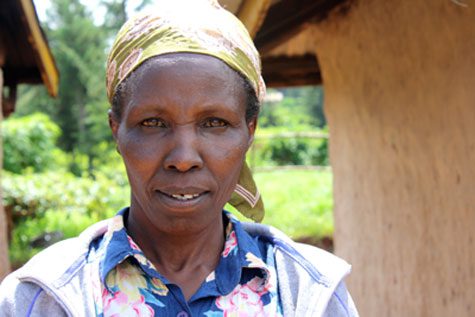
This method of building and improving housing one step at the time is called incremental or progressive building and accounts for up to 90 percent of residential construction in the developing world. Families build their homes bit by bit as needs change and resources become available.
With 1 billion people living in slums and that number on the rise, the task of significantly impacting the problem of substandard housing is not easy; but by facilitating incremental housing efforts, we help create more safe and secure dwellings, reducing the financial burden on governments that subsidize housing. Formalizing the incremental process helps to create better planned communities rather than ad hoc solutions.
In the developing world, fewer than 5 percent of people have access to a home loan. Before the concept of housing microfinance became widespread, many low-income families who had no access to capital dared not even think about making improvements to their homes. Through options such as housing microfinance, this is now possible.
For example, homeowners in the Northville village of Balagtas in the Philippines have taken out incremental loans ranging from US$450 to $2,200 to install septic tanks and toilets, add windows or floor tiles, paint or make other improvements. Many of the families in this province moved from Manila, where they had been living in precarious informal settlements along the city’s polluted waterways. The new villages offer a fresh start, and residents have a sense of pride that only homeownership can bring.
TSPI, which stands for Tulay Sa Pag-unlad Inc. and translates to “Bridge to Progress,” is a housing microfinance lender and a partner with Habitat in this initiative. They have issued a number of the loans in the village for both microenterprise and housing microfinance. Although housing-specific loans represent less than 10 percent of that total so far, the initiative has grown from pilot to scale at an unprecedented pace, according to Imelda D. Mendoza, area manager for TSPI. The repayment rate is 100 percent, and almost without exception, families tell us when they pay off one loan, they take out another one to make further improvements.
“The success is because of the relationships we’re able to build with our clients,” Mendoza said. “We see our clients begin to dream, to aspire to have a better house, a better life.”
Sandra Prieto-Callison, the director of housing finance and market development at Habitat’s Center for Innovation in Shelter and Finance, said, “There’s a big difference between microenterprise and housing microfinance. There’s an emotional attachment when people talk about housing that we just don’t see when they’re talking about microenterprise.”
Often the home improvements include a business component. One family added an extra room onto their home to store crops; another built a shed outside their improved home to accommodate their fishing business.
Housing microfinance loans are often bundled with Habitat’s housing support services—ranging from design advice to recommendations of local workers or material suppliers—in a unique approach that will be tested for scale and replication elsewhere in the world.
In our new annual report titled, “Because of This House…” there is a story about Habitat partner Tuy Kea, a widow who took out a US$4,000 microfinance loan to build a better home for herself, her four children and her grandson. She and four of her neighbors who live in a small farming village about an hour from Phnom Penh have received loans from a local microfinance institution and construction technical assistance from Habitat Cambodia.
Our efforts are about empowering people. In our last fiscal year, we reached an exciting milestone: We have served more than 1 million families since our founding in 1976 through housing solutions such as facilitating microfinance loans and housing support services, as well as new construction and repairs.
I’ve seen the difference that microfinance models have made in the lives of other families who improve their homes incrementally. Often, neighbors create savings groups that meet regularly to pool resources and set priorities that serve the entire community.
It doesn’t take a lot of money to change lives. Though this model for building simple, durable shelter takes time, having access to appropriate financial products and construction advice enables families living in poverty to dramatically improve their living conditions.
(Photo: Sofia Koech and her family built a larger core house with a housing microfinance loan from Habitat for Humanity's retail microfinance program. Courtesy of Habitat for Humanity International).






Comments